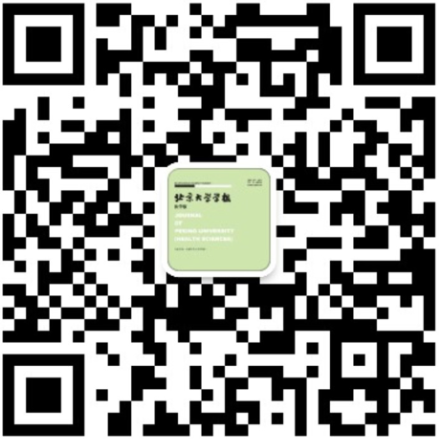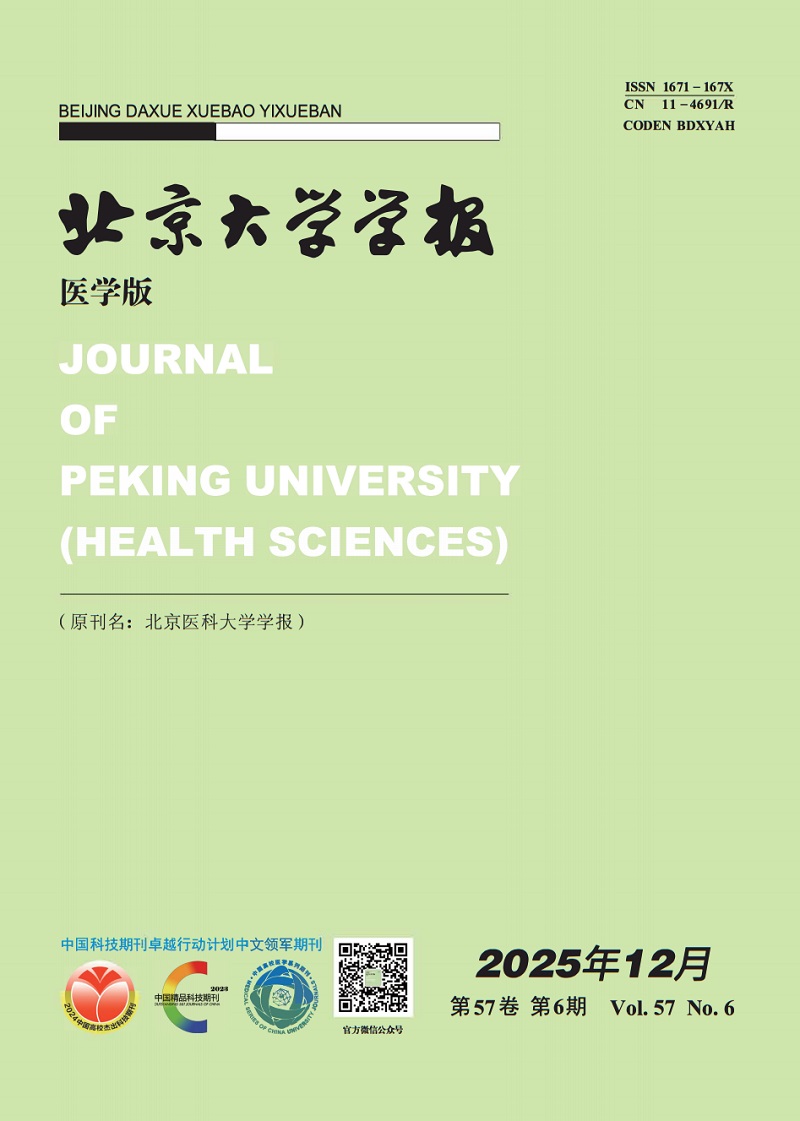 Manuscript Organization
Manuscript Organization-
1 Title
The full manuscript title should be succinct (less than 20 Chinese characters) and informative. Abbreviations in foreign language are not recommended. Non-specific phrase, such as “Investigation of” and “Observation of” should be avoided. English title must be consistent with Chinese title.
2 Authorship
All persons designated as authors should qualify for authorship. Each author should have participated sufficiently in the work, be able to answer manuscript-related questions and take public responsibility for the content. Manuscript with multiple authors must clarify corresponding author(s) and provide corresponding author(s)’ email address. If listed author were from a foreign country, Hongkong (China), Macau (China) and Taiwan (China), a hard copy of consent form from this author must be attached. Authors decide how many people are listed and the sequence, which the journal does not allow any changes after submission unless exceptional circumstances are noted. A satisfactory explanation for any proposed changes in authorship will be required. We will also require a consent form with signatures from all authors.
All authors should be involved in drafting the article or revising it critically for important intellectual content, and must have read and approved the final version of the manuscript. Any other contributors should not be listed as authors, but rather be acknowledged appropriately in the Acknowledgments section. The corresponding author is responsible for ensuring that all authors have made bona fide, substantive contributions to the research and have seen and approved the manuscript in final form prior to submission.
Author affiliations include the whole name of the organization, department name plus city name and postal code. It is important to indicate a corresponding author, together with complete mailing address, telephone number and email address. Authors from different organizations must be marked superscript (1, 2…etc.) after authors names. In addition, same marks (1, 2…etc.) must be labeled before the corresponding organization names. Authors’ information in English must be provided in manuscripts with English abstracts and consistent with their information in Chinese.
3 Abstract
Abstract in Chinese should contain at least 500 Chinese characters and abstract in English should contain no least than 350 words. Original Articles, Technology & Method, Express Research Report and Challenging/Rare Case Analysis types of manuscript must have an abstract in both Chinese and English, written in third-person point of view. Structured abstract is required, including Objects, Methods, Results (with major data) and Conclusions. Each section should have corresponding subtitle. English abstract should be placed after Chinese abstract. Review and Case Report only need an unstructured English abstract located after the main manuscript.
4 Keywords
Each manuscript should contain 3-5 relevant keywords, listed in newly updated Medical Subject Heading (MeSH) edited by American National Library of Medicine. Each keyword should be separated by a semicolon.
5 Research Design
The type of study, such as prospective, retrospective or cross-sectional, must be clearly stated in the manuscript. Study design, such as self-match, group or crossover, must be mentioned. Phase of clinical trial is required to be stated for new drug clinical studies. In addition to blinding method and eligibility and exclusion criteria for experimental participant selection, quality control procedures should also be clarified.
6 Statistics
When data are summarized in the Results section, author should specify the statistical methods used to analyze them (e.g., t-test, two-factor variance analysis), the specific statistic value and P value. (e.g., t = 3.45, P < 0.01). 95% confidential intervals should be specified when population parameter estimation is involved. Generally for quantitative data, statistical data should be expressed in the format of “mean ± standard deviation”, and appropriate statistical methods should be applied according to the study design, features of data and the purpose of the analysis. The linear regression equation should be avoided to analyze data on the scatter plot with obvious trend. Correlation analysis should not be used to illustrate the degree of agreement between the two study methods. For multi-factor and multi-index data, based on single-factor analysis, multi-factor statistical analysis methods should be used as much as possible to make a more reasonable explanation for the interaction between factors and the internal relations between multiple indicators. When using relative numbers, the denominator should not be less than 30. Pay attention to distinguish the difference between percent and percentage. Statistical symbols should be used according to the standards of GB3358-82 “Statistics Terms and Symbols” and presented as italics.
7 Medicine Terminology
The standards set by National Natural Science and Technology Term Evaluation Committee, “Medical Terms” published by the Science Press and subject-related terms shall apply. For those terms which have not yet announced, author should refer to the “English-Chinese Medical Vocabulary” edited by People's Medical Publishing House. The name of the drug is based on the latest version of the “Pharmacopeia of the People's Republic of China” or the “General Names of Chinese Drugs” (Beijing: Chemical Industry Press, 1997) written by the Pharmacopoeia Committee of the Ministry of Health, and no commercial names are allowed.
8 Quantity and Unit
The use of names and symbols for quantity and unit should be standardized according to series of standards of GB 3100—3102-93 “Quantity and Unit” and relevant international regulations. The quantity symbols is expressed in italic Latin or Greek letters (with the exception of pH, which should be in regular format), e.g., m (Mass), t (time), λ (wavelength). The unit symbols are always expressed in regular letters, such as g (gram), m (meter), etc. In figures and tables, the standard form of presenting quantity and unit is “quantity/unit”, for example, t/h (time unit: hour), “p/kPa” (pressure unit: kPa), etc.
9 Numbers
GB/T 15835—2011 “Regulations on the Use of Numbers in Publications” should apply.
10 Figure and Table
Figure and Table should be numbered according to the order in which they appear in the main manuscript. Each figure (table) should have a concise title in both Chinese and English. Legends should be written in English and placed below the figure (table). Arrange and write the vertical and horizontal headings of the table in English reasonably, and clearly express the meaning of the data. The number of decimal numbers for the same index data in the table should be the same, generally one more than the accuracy that can be measured. Photographs require good resolution and contrast. The gross specimen photos should include scales. Pathological photos require staining method and magnification information. If patient’s picture is used, authors should get permission from the patient or cover the part in the picture where the identity could be distinguished. To cite a published figure, the source must be indicated, and the permission letter from the copyright owner must be provided.
11 Abbreviations
When an abbreviation has to be used, write its name in full Chinese at the first appearance, and then use parentheses to indicate the Chinese abbreviation or English full name and its abbreviations, and separate the latter two with a comma (if the abbreviation is commonly used one, it is not necessary to list its full English name).
12 Acknowledgments
To the collaborators who participated in part of the work, the support staff who accepted the commission to carry out a certain task, as well as those who gave guidance and provided funding, a short paragraph can be used to express gratitude. The content of acknowledgements should be placed in parentheses after the main text and before the references.
13 References
Standards from GB/T 7714—2015 “Regulations for the references after the manuscript” shall apply. Authors need to list references and indicate the source if articles, figures tables or data are cited in the manuscript. Identify references in text, tables, and legends by Arabic numerals in superscript with square bracket after the sentence or after author’s name of the citation. References cited only in tables or figure legends should be numbered in accordance with the sequence established by the first identification in the text of the particular table or figure. References for research articles are only limited to the ones that the authors have read in person, and reference published in the past 5 years should account for more than 50%. Internal communication, personal communication and paper in preparation or unpublished articles could not be used as references. Secondary or tertiary references from abstract and reviews should be avoided. For up to three authors, list them all. For more than 3 authors, list first three authors followed by “, et al.”. In all Western names, the whole surname is placed first, and the abbreviation of first name follows. The names of Chinese author in Chinese Pinyin should be treated the same as in Western names. In the title of a Western-language article, the first letter of the first word and proper noun is capitalized, and the rest are all lowercase. The abbreviations of foreign journals are based on the List of Journals Indexed in Index Medicus edited by the American National Library of Medicine. Authors should carefully check the cited references to ensure the accuracy of each content. Arrange the references at the end of the text in the order of citation (marked with Arabic numerals).
Here are some examples:
[1] Zhu HH, Huang XJ. Oral arsenic and retinoic acid for non-high-risk acute promyelocytic leukemia [J] .N Engl J Med, 2014, 371(23): 2239-2241.
[2] Sambrook J, Russell DW. Molecular cloning: a laboratory manual [M]. 3rd ed. New York: Cold Spring Harbor Laboratory, 2001: 40.
[3] Babu BV, Nagar AK, Deep K, et al. Proceedings of the Second International Conference on Soft Computing for Problem Solving, December 28-30, 2012 [C]. New Delhi: Springer, 2014.
[4] World Health Organization. Factors regulating the immune response: Report of WHO Scientific Group [R]. Geneva: WHO, 1970.
[5] Calms RB. Infrared spectroscopic studies on solid oxygen [D]. Berkeley: Univ. of California, 1965.
[6] Dublin core metadata element set: version 1.1 [EB/OL]. (2012-06-14) [2014-06-11]. http://dublincore. org/documents/ dces/.
-
《北京大学学报(医学版)》2020年第52卷第3期“公共卫生学研究”重点号征稿和征订启示
(2019-12-31) -
《北京大学学报(医学版)》2020年第52卷第4期“泌尿外科疾病研究”重点号征稿和征订启示
(2019-12-19) -
《北京大学学报(医学版)》入选2018年度中国百种杰出学术期刊
(2019-11-20)

WeChat public address

Sponsor: Peking University
Editor-in-Chief: ZHAN Qi-min
Executive Editor-in-Chief: ZENG Gui-fang
Editing and Publishing: Editorial Department of Journal of Peking University (Health Sciences)
ISSN: 1671-167X
CN: 11-4691/R